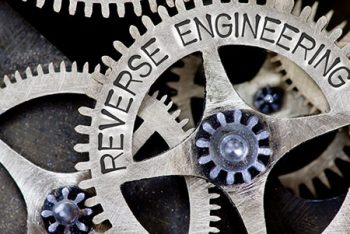
Reverse engineering is the skill of taking apart a piece of machinery, electrical equipment or other product in order to work out how it operates, and how it is put together. The deconstruction of these items involves learning about the device, and then taking it backwards, making a note of every stage of the process, in order to establish how the system works. This can be very useful to businesses who want to improve on an old design, in order to make it more efficient, or to inventors seeking to discover a new way to handle an old process.
Reverse engineering can be a complicated process which involves in-depth study of the part in question. It may involve testing the part so that the engineers can assess how it functions, and what parts are needed to perform its operation. There are two ways of doing this, known as ‘black box’ and ‘white box’. The former is where the part is observed without looking at the internal mechanism, and the latter where the internal mechanism is looked at. Using the systems together can help engineers to work out precisely the role of each part of the mechanism.
Reverse Engineering in Understanding History
Reverse engineering can help manufacturers to design a new part which will replicate the movement of the old piece, but increase accuracy or speed. It can also help them to discover problems with the part, for example, flaws in the design which mean that it will not perform 100% of the time. When used with archaeological items, for example, reverse engineering can help experts to discover new facts about the part, and show them how it might have been used in everyday life. It can also be used with electronic software, showing businesses how their network security was put together in order to improve protection and eliminate flaws.





